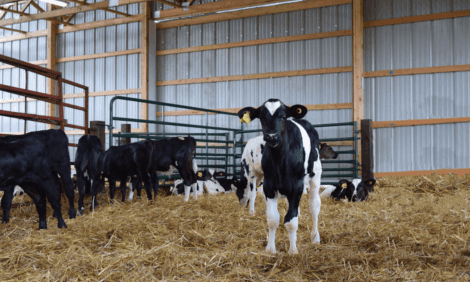



Are Feed Costs a Concern for Producers?
ANALYSIS - Feed prices now account for the highest cost in livestock production and have been somewhat volatile over the last year. With unpredictable weather patterns, increasing planting costs and competition elsewhere in the food chain, Charlotte Johnston, TheCattleSite editor speaks with industry experts from Australia, Europe and the US to find out whether producers are concerned about feed prices and supplies.Australia - Feeder Prices Bigger Worry than Feed Prices
In Australia, tales of drought and floods dominate the press, which would lead speculators to think that feed prices would be sky high. However Dougal Gordon, CEO of the Australian Lot Feeders' Association said that feed grain prices had been relatively low over the last six months, compared to historical trends. Future grain prices will depend on the Australian spring and US corn stocks.
Floods in Queensland and Victoria have impacted summer crop production, however Mr Gordon said that losses in these states will be offset by the rain lifting yields in other areas, as well as the rain providing a good soil moisture for the winter crop.
The summer crop harvest has not yet been completed, so it is difficult to gauge the damage the floods have caused. However, he said that the Australian winter crop is significantly larger and of much greater importance to growers and grain users.
With good soil moisture in Eastern Australia and currently a good supply of feed grain, if Spring is favourable, then there could be a downward pressure on prices, Mr Gordon said.
High feeder cattle prices are currently far more significant in terms of cost of production than feed grain for finishers, he explained. "Unfortunately subdued feed grain prices have not offset the current high feeder cattle prices."
Europe - Drought Threatens Harvest
With Europe suffering from drought, Copa-Cogeca said it is too early to tell the true impact that the drought will have on feed prices.
"At the moment the maize price is driving the feed market, because the world carry-over stock is going down every year," said Arnaud Petit, from the organisation. "Whilst the harvest in South America is smaller than expected, the planting area in the US will be much higher - likely a bumper one since 2007."
European producers are concerned about feed costs, Mr Petit said, because the price of feed is not following in line with farmgate prices.
"Profit margins for livestock producers are being squeezed by high input costs, and the increase in production costs is not being passed along the food chain to the consumer - which is likely due to the economic crisis."
Commenting on feed prices in the future, Mr Petit said that policy had a role to play. He said that proposed greening measures under the Common Agricultural Policy may exacerbate the feed deficit and increase costs for farmers.
A report released earlier this month by Copa Cogeca suggested that in South Europe only 30 per cent of the cereals area is likely to be cultivated as drought affects crop growth and frost kill increases the cost of re-sowing crops.
US - Corn Futures Trading at Historically High Levels
In the US, Chad Spearman an analyst with Cattlefax, has said that corn prices have trended lower from last summer’s highs and remain in a long term down trend. Old crop futures prices are expected to remain at a strong premium to new crop prices as old crop stocks remain historically low, yet the large expected increase in corn acreage is expected to boost supplies substantially.
The increase in supply is expected to be larger than the usage increase, which has boosted projected corn ending stocks relative to total usage (stocks to use levels) to 9-12 per cent. The increase in supply will also push prices lower, Mr Spearman said. Over the past 19 months stocks to use levels have remained from 5-6.8 per cent.
Old crop corn futures are expected to meet major resistance near $6.65-$6.75 with strong support near $6.00/bu over the next 90 days. New crop December 2012 futures are expected to meet resistance at $5.50-$5.60 with an initial downside risk near $4.60-$4.80 into the summer and fall, Mr Spearman explained.
Planting costs have increased, he said, although the acreage planted is expected to increase 3.9 million acres to 95. million acres, according to the USDA Prospective Plantings report in March.
Because of this, December 2012 corn futures have been trading at the second and third highest levels on record over the past three months, Mr Spearman explained. But despite this and concerns over feed prices, Mr Spearman says that the increase in acreage planted has kept livestock producers optimistic about the future feed situation.
"Corn prices are expected to remain historically high, but well off the $7.00/bu plus levels seen over the past several months. It will likely require a major corn production issue to take corn back to those levels."
Drought has already had some impact on the market. Mr Spearman said that steady declines in South American corn and soybean production over the past four months has supported prices for both markets.
He said importantly the falling expectations for the size of the South American soybean crop had already increased demand for US soybeans and driven soybean prices up, causing them to rally sharply relative to corn prices.
"The record high corn and hay prices over the past four years, have put more pressure on the search for alternative sources of feed," he said.



